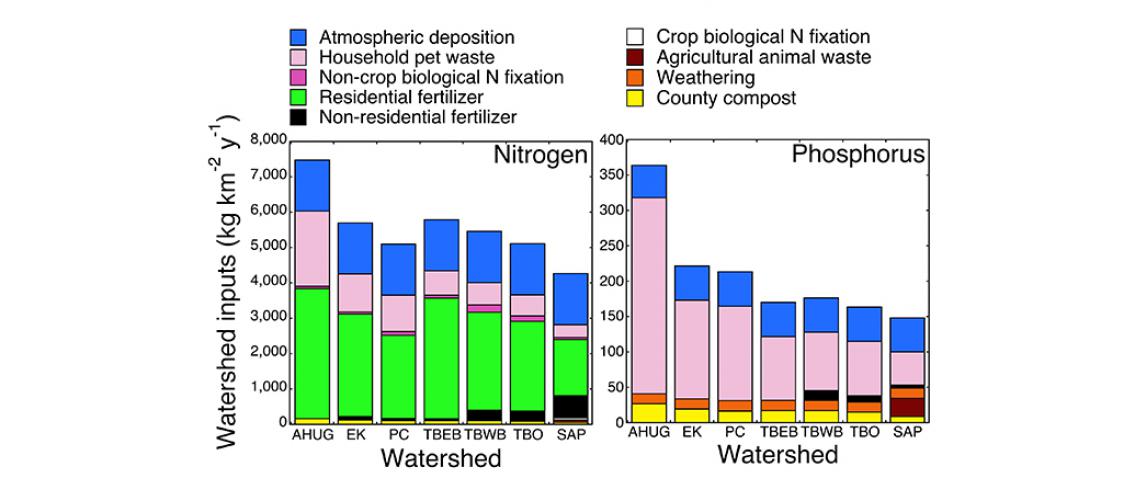
Maintaining the health of urban waterways is an ongoing battle. Urban areas, due to their high population densities, have a number of challenges in maintaining clean water. While sewage systems have been managed so that pollutants are largely controlled, the contribution of pollutants from other sources, such as stormwater runoff, is not yet completely understood.
In a paper that appeared recently in the Proceedings of the National Academy of Sciences of the USA (PNAS), MSI Principal Investigators Sarah Hobbie (Ecology, Evolution, and Behavior; Institute on the Environment) and Dylan Millet (Soil, Water, and Climate) and their colleagues describe the different ways nitrogen and phosphorus get into urban watersheds. Excessive amounts of these nutrients causes such problems as toxic algae “blooms,” bad smells, degraded water clarity, and loss of key species.
The study showed that household activities, as opposed to commercial or industrial sources, are the primary sources of phosphorus and nitrogen in urban watersheds. The primary input of phosphorus to watersheds is pet waste; phosphorus then makes its way into streets and stormdrains, and ultimately into surface waters, through lawn runoff during heavy rains and snowmelt, and through tree that fall into streets. The largest input of nitrogen to urban waters was residential lawn fertilizer. Like phosphorus, some of this nitrogen also makes its way into stormwater via runoff and tree leaves; the rest washes into groundwater or is lost to the atmosphere. The different ways nitrogen and phosphorus make their ways into urban waterways means that different approaches will be necessary to handle them.
The paper can be found on the journal website: Sarah E. Hobbie, Jacques C. Finlay, Benjamin D. Janke, Daniel A. Nidzgorski, Dylan B. Millet, Lawrence A. Baker. 2017. Contrasting nitrogen and phosphorus budgets in urban watersheds and implications for managing urban water pollution. PNAS 114(16) 4177-4182. DOI: 10.1073/pnas.1618536114.
Stories about the paper appeared on the University of Minnesota website: Nitrogen, phosphorus from fertilizers and pet waster polluting urban water, and on Minnesota Public Radio: Pets, lawn fertilizer pose big threats to Mississippi River in Twin Cities.
Professor Hobbie uses MSI resources to study the ecology of ecosystems, focusing on the influence of changes in atmospheric composition and climate on ecosystem processes; the effects of urbanization and suburbanization of biogeochemical cycles; and the influence of plant species on biogeochemical processes. Professor Millet’s work using MSI aims to understand the chemical composition of the atmosphere, how it is affected by humans and natural processes, and implications for health, air pollution, and climate change.
Image description: Watershed nutrient inputs of N (Left) and P (Right). Watersheds are ordered from most to least residential (left to right), based on housing density. Abbreviations: AHUG, Arlington-Hamline Underground; EK, East Kittsondale; PC, Phalen Creek; TBEB, Trout Brook East Branch; TBWB, Trout Brook West Branch; TBO, TB Outlet; SAP, Saint Anthony Park. TBO includes TBEB and TBWB and additional land area. Image and description, Sarah E. Hobbie et al. PNAS 2017;114:4177-4182. ©2017 by National Academy of Sciences.
posted on May 15, 2017